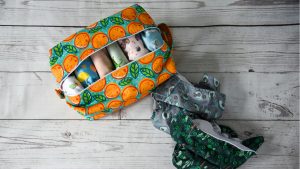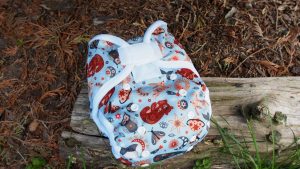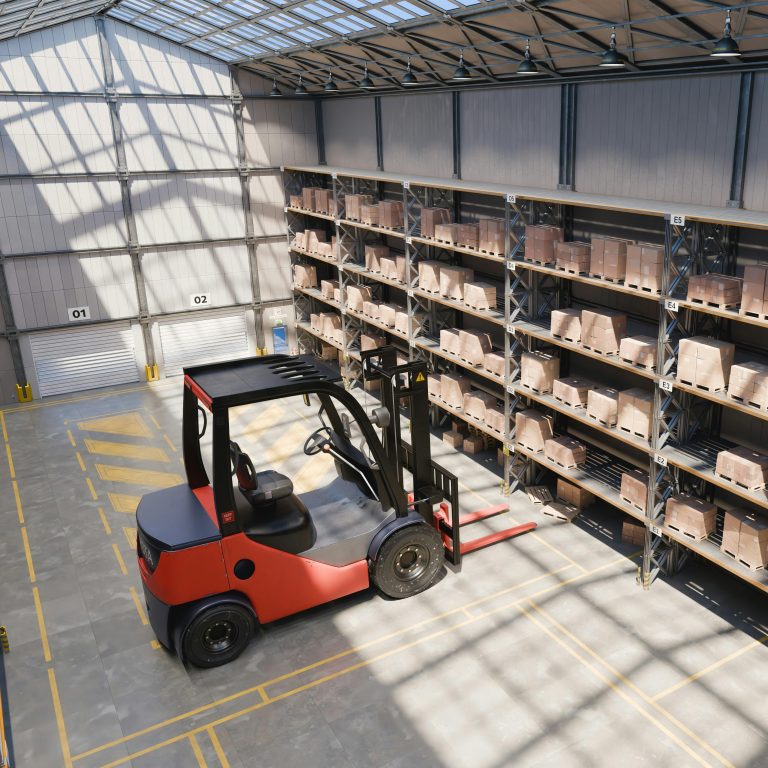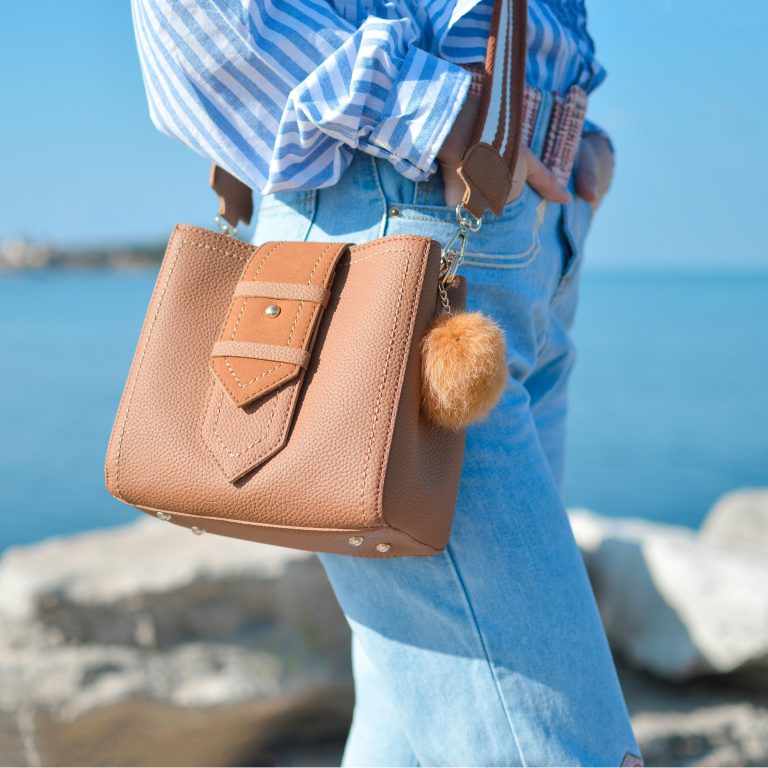Introduction: The Evolution of Modern Parenting Products
Over the last decade, the global diaper bag market has expanded and transformed in ways that considerably impact how manufacturers develop, and design new products. Diaper bag manufacturers recognize the needs of parents—especially working mothers and fathers who have a lot on their plates—are no longer seeking basic functional designs. They want products that embrace a fusion of style and practicality to simplify their daily hustle. Integrated products, like a comb, have surprisingly become vital additions to diaper bags at the comprehensive design stage, adding seamless on-the-go grooming for children.
At first glance, the design of the bag and the comb may seem unimportant. However, it is the little details that help drive user experience and assists brands in meeting the expectations of a more demanding clientele. These little details help engage and delight a customer in ways that transcend expectations. They build repeat business, loyalty, and inflow of positive, even unsolicited, market feedback.

Value on multifunctionality has been and remains the top value of modern parents. This comprehensive analysis of consumer behavior should come as no surprise to diaper bag manufacturers and the brands that have the most of the business in the diaper bag market.
A 2023 survey with thousands of respondents conducted by BabyCenter revealed interesting data. 62% of parents stated that features such as accessory compartments and built-in tools influenced their purchase decisions when choosing diaper bags. Additionally, 47% of respondents stated that bags with tools like combs, wipe dispensers, and foldable changing mats were more desirable compared to plain bags. From this data, there is an important lesson for OEM players in the B2B space. Even the smallest tools, such as a comb, can increase the value of a product and help to stand out in a competitive market.
The diaper bag market is projected to grow from USD 1.75 billion as of 2024 to USD 3.55 billion by 2033, as stated by Grand View Research. This is a result of a 3.9% compound annual growth rate. There are several reasons for this growth, such as the increase of urbanization, the increase in women in the labor force, and an increase in educated consumers and baby hygiene awareness.
Combs and tissues are not the only small accessories. There is an indicated increase in consumer interest in “all-in-one convenience” especially in urban areas, which is why combs, tissue holders, and pacifier pouches are being incorporated in bags.
The concept of stylish, multifunctional, and compact baby products is differentiating many baby brands from their competitors.
From a manufacturer’s strategic point of view, the addition of convenience features like the integration of accessories into purse-style diaper bags goes far beyond simple convenience addition features and incorporates intentional design. Retailers are looking for unique selling points that are most likely to improve conversion rates and customer reviews due to the hyper-competitive nature of online stores. Differentiation is critical for success. Accessories provide practical value to parents and offer brands an effective way to differentiate themselves. This is why custom and OEM designed accessories are becoming increasingly popular and valuable in today’s manufacturing environment.
Overall Size and Future Expected Changes
The global diaper bag market’s bag industry is growing due to e-commerce, and increased disposable income. In North America, stylish and multifunctional diaper bags are the most in demand, and around 65% of parents are looking for bags with additional storage and organizational features.
Brands like Luli Bébé, Mellories, and Skip Hop are able to grow by over 12% each year in cities like New York, Los Angeles, Chicago, and Toronto. That shows that parents are increasingly spending money on bags that are beautifully designed and useful for multiple purposes.
In European markets, parents value the sustainability of the materials and unique design. About 58% of European parents consider the materials used in the diaper bags and are willing to buy eco-friendly options, which pushes companies to use PU leather, reclaimed fabrics, organic cotton, and cork. Self-care integrated multifunctional bags are also highly sought after in this segment. They appreciate the premium value. Companies that implement this successfully note significantly increased customer satisfaction, repeat purchases, and brand loyalty, which are essential in today’s competitive market.
The Asia-Pacific region is arguably the most rapidly expanding market due to urbanization, more mothers entering the workforce, and a growing middle class that is able to spend money.
More and more parents in cities such as Shanghai, Tokyo, Singapore, Seoul, and Mumbai are looking for small and functional diaper bags. These bags are equipped with little tools like combs, foldable changing mats, and insulated pockets for bottles. Original Equipment Manufacturer (OEM) suppliers aiming at this more diverse and rapidly developing market in the region would need to be flexible in their approach to manufacturing such products. They will need to adjust to unique local tastes, such as cultural color preferences for products, and accessory integration. This will ensure bags appeal to culturally specific consumer expectations that will make them more likely to purchase. This will likely make the products more marketable and easier to sell.
More and more accessories are helping premium diaper bags sell better across all retail channels, and this is observed by various research. Statista thoroughly researched the market, determining that multifunctional bags with integrated accessories accounted for 35% of all sales in the premium diaper bag market for the United States alone in 2023. Another independent research noted that 37% of parents surveyed would be likely to spend 10-20% more for diaper bags that have small accessories like combs and wipes kits. This survey aids B2B manufacturers in determining what small design shifts consumers are after in diaper bags, their ending goal is differentiation in the market.

Perceived Value of Accessories
When consumers are offered tool accessories little practical parenting problems, the perceived value of the product increases and in turn positively affects buying behaviors.
Children often need quick grooming after meals, playtime, or social outings with family or friends. Parents appreciate having a comb and other grooming tools handy in a diaper bag to meet these needs without extra fuss and without digging through multiple bags. Primary consumer benefits include:
Convenience.Parents appreciate instant access to grooming tools and other accessories, which helps save clutter, cuts down stress on outings, and reduces the chances of forgetting essential items.
Efficiency. Parents are able to save time and enhance their overall experience, especially when it comes to travel, family visits, and other busy days, where every minute is precious.
Perceived Premium Value. Customer-centered design is apparent when products include combs and other accessories, which positions the product on premium tiers, justifying its price.
Functional integration proves this customer preference in action. Luli Bébé’s Monaco series features dedicated compartments for accessories and small essentials, receiving consistent amazing ratings of 4.8 to 5 stars on Amazon, Target.com, and other niche baby product retailers. Convertible diaper bags with detachable accessory kits from Mellories are frequently purchased, showing the effectiveness of functional integration on customer satisfaction and loyalty.
In a 2023 survey with 1,200 parents from North America and Europe, 42% of them highly valued accessory integration in diaper bags and 37% were willing to pay extra for it.
In the retail industry, including accessories makes it possible to carve out meaningful differentations in the intensely competitive market, increases consumer satisfaction, and boosts incremental sales growth. From the B2B manufacturing standpoint, producers of feature-rich bags bring considerable additional value to retail clients that allow them to compete more effectively within e-commerce and brick-and-mortar retail.
Brand Examples
Luli Bébé: The Monaco Series actually combines and balances the seven principles of ergonomics, high end materials, and high end product design. It has been thoughtfully designed, and the user has been the focus of the design. The high customer reviews on different user review platforms, bring one to appreciate the level of design and integrated accessories into bags improve one’s design considerably.
Mellories: This forward-thinking firm provides their clients with customizable detachable accessory kits that help retail brands significantly enhance the client’s online sales. The convertible diaper bags and kits improve the client’s product line, and now with branded detachable kits, the client’s product is more user friendly.
Skip Hop: The bags made by Skip Hop caters to urban parents who looking for compact, stylish yet very functional bags. Skip Hop has successfully held on to a solid position in the market with their bags. They feature advanced compartmentalization and design ergonomics in scaffolding parenting configurations, thereby reducing the cognitive load on parents.
These brands show that thoughtful design is signalled by the simple addition.
These examples demonstrate that well-planned and well-promoted accessory features can positively influence consumer perception, improve brand reputation, and boost sales.
Custom and OEM Adaptations: Opportunities for Growth
Custom and OEM Adaptations gives manufacturers the ability to create precisely tailored products that align to specific brand needs and allow for some scalable market growth. As retail brands begin to establish more expectations from their manufacturing partners, the demands become more exhaustive, including:
Custom Cuts: Tailoring specific colors, patterns, and even internal structures that keep the brand loyal to its identity and considerate to consumer preferences.
Accessory Embellishments: Function-enhancing ” value-adding ” inclusions that are professional, like combs and wipes holders, insulated bottle compartments, foldable changing mats, etc.
Seamless Brand Integration: Custom logos, branded labels, hang tags and unique packaging that fosters unboxing experiences, reinforces a brand, and creates market identity.
Mellories and Luli Bébé show how beneficial flexible OEM solutions are within the current market. Qualitative comprehensive customizations enable retail brands to rapidly meet current market demands, achieve higher consumer satisfaction, and differentiate products. Manufacturers offering these level customizations create highly valuable partnerships, improving their brand and market competitiveness.
Addressing Critical Production Considerations
Material Selection: Strategic choices between PU leather for premium appearance and the polyester for ever lightweight durability, all the while, polyester can be eco-friendly too.
Design Integration: Implementing thoughtful accessory integration and securing attachment points and thoughtful placement for touch points that balance accessibility and security for the globe.
Workflow Efficiency: Completion of targeted configurations on assembly lines that are specifically optimized for accessory integration in production lines without deterring speed and quality.
Quality Assurance: Production must meet durability, safety, and ergonomic standards, while surpassing retail client expectations and satisfying compliance standards. Production compliance standards include CPSIA, REACH, and Proposition 65.
Manufacturing Considerations and Production Excellence
Manufacturing production excellence calls for focused attention to materials, design, and operational efficiency related to material integration:
Material: PU leather’s premium appearance, easy cleaning and spill able fabric usability are big wins for parents. They appreciate and love the polyester.
Design: Achieving secure access to snap closures.
Spotting the features of a design that prevents items from falling out during regular use while allowing quick retrieval by parents relies in large part on the closeness of an iteration to the goal state of the structure.
Batch Production Efficiency: Streamlined assembly processes, standardized templates, and properly trained staff ensure consistent productivity across shifts and production lines. Efficient workflows minimize production time while maintaining quality standards.
Testing and Compliance: Real-world usage requires stress testing of straps, zippers, and compartments. Compliance with international safety standards including CPSIA (U.S. Consumer Product Safety Improvement Act), REACH (European chemicals regulation), and California Proposition 65 negates liability shifts to the manufacturer and retail clients while also ensuring consumer safety.
Keeping an effective balance of these multifaceted factors enables manufacturers to produce functional and reliable products, satisfying quality-seeking retailers and end consumers alike.
Quality Control and Compliance Standards
Well-established B2B relationships in manufacturing depend on the reputation of a business, and, in turn, the availability of reliable partners. Long-term success hinges on the consistency of established standards.
Material Inspections:Defect and waste reduction efforts will be maximized with the comprehensive assessment of fabric strength, stitching quality, and accessory durability before the materials move to production lines.
Functional Testing: Verification of all compartments, zippers, and accessory placement ensures products function as designed and meet specifications agreed upon with retail clients.
Safety Compliance: Materials being non-toxic and all safety requirements being met protects the customer and protects the manufacturer’s liability and regulatory non Compliance.
Packaging Evaluation: The safe packaging of the accessories goes along way in preventing the damages that could be encountered in transportation thereby ensuring customer satisfaction upon delivery of the accessories.
Returns are expensive and so are replacements. Trust and confidence are gained by companies in the business manufactures in the clients and business partnerships are formed based on reliability and performance.
Design and Function Optimization
Understandable and positive design principles boost user satisfaction which helps increase positive feedback and reviews.
Compartmentalization: Designated compartments for all the items: diapers, wipes, bottles, and grooming tools are important for best organization. It helps parents save time in finding items.
Accessory Placement: Strategic positioning of accessories helps them be handy and secure. This is usually in dedicated pockets close to the main opening of the bag for easy retrieval.
Adjustable Straps: The shoulder and crossbody options where parents can comfortably and differently carry the bags are useful for various situations.
Material Durability: Being water resistant and easy to clean makes fabric withstand the daily parenting struggles from spills to outdoor.
Aesthetic Appeal: Design principles of minimalism, proper color coordination and polished finishes sell to style-conscious customers who are willing to pay for functionality.
B2B Marketing Strategies for Manufacturers
Teaching our clients the value of accessories is important for our B2B relations.
Live Demonstrations: Giving our clients a sample of the product and doing a live demonstration is a hands-on way for our retail clients to appreciate the product features, and value, and understand the benefits for the end consumers.
Detailed Consumer Insight Reports:Retail clients appreciate when we share and explain detailed surveys on parent attitudes and parent buying behavior because it guides them in making better product buying decisions and in the stock selection.
Ready-to-Use Co-Branded Campaigns:Retail clients appreciate ready-to-use promotional campaigns we provide that they can use to sell the new accessories. These campaigns highlight the multifunctionality of the accessories and the convenience they provide, which helps clients sell them.
Video Content Creation:Creating professionally made videos that demonstrate usage of the products helps retail clients in their promotion, and more importantly, engages the consumers.
Clients who’ve been taught how to market sell products create a healthy environment for both the end user and sales performance.
Market Differences and Localization
North America:Parents value multifunctional, stylish designs that work seamlessly with their lifestyles. Premium brands report 12%+ annual growth, indicating strong market receptivity to innovative features.
Europe:Sustainability and design aesthetics are crucial differentiators. Eco-friendly materials attract 58% of parents, making sustainable manufacturing practices a competitive necessity rather than optional.
Asia-Pacific:The region’s rapid consumer expansion presents a unique opportunity for manufacturers if they embrace the region’s parents’ functional compact bags and bags with integrated accessories designed for small living quarters and public transit.
OEM suppliers must customize designs for each local market based on the region’s material and color preferences and cultural associations for the integration of various functional accessories.
Sustainability and Innovative Eco-Friendliness
Green consumerism presents diaper bag manufacturers with both unfavorable and favorable conditions for the adoption of eco-friendly packaging and accessories for diaper bags. Environmentally conscious consumers are drawn to bags minimizing eco-unfriendly materials that use accessories and packaging materials made from biodegradable plastics and other eco-friendly materials to reduce the functionality and durability of the eco-unfriendly materials used.
Baby product manufacturers avoid the use of lightweight and washable materials made of recycled polyester and other biodegradable plastics and prefer to use eco-unfriendly materials such as TPU-coated nylon. European and North American consumers are willing to pay for containers made from organic cotton, recycled polyester, and other plant leather alternatives.
When manufacturers showcase sustainable business practices throughout sourcing, production, and packaging, they achieve a competitive advantage during B2B negotiations with environmentally friendly retail brands.
Sustainability and innovation can also intersect within packaging. Advanced manufacturers are replacing traditional plastic packaging with recycled cardboard and biodegradable films. They also adopt minimalism in design to limit excess packaging materials while still safeguarding products during transit and retail display. Some manufacturers go as far as offering carbon-neutral shipping and issuing environmental impact statements to their retail clients, helping the retail clients promote sustainable ESG initiatives.
Digital Technologies in Smart Manufacturing
Digital technologies and smart production systems are the new frontier in the manufacture of diaper bags. The introduction of Industry 4.0 principles within the diaper bag manufacturing industry is the game changer. The use of IoT sensors, and the innovation of real time production monitoring and predictive analytics within the industry is redefining service delivery within the manufacturing sector. They are transforming quality control, production efficiency, and supply chain transparency, all of which are vital for maintaining competitive advantage.
Smart manufacturing is the new frontier in the industry. Each production bag can be tracked and monitored throughout production to determine quality at each stage and to pinpoint where possible defects arise. While still in its infancy AI driven visual inspection is being used by forward looking manufacturers to ensure that key seams and other areas within the bag meet the standards of consistency and precision.
This traceability includes all accessories so that every single piece is tracked. For retail customers, this is enough reassurance that there are no safety issues. They can also focus on potential risks that lead to costly product recalls and damage consumer complaints.
For other customers, retailing and other digital interfaces are key drivers to B2B communication and collaboration. Cloud-based project management systems can enable the instant exchange of design files, production progress, and quality assessments. This speeds up decision-making and allows the rapid introduction of new retail products. Virtual sampling allows retail buyers to assess and authorize designs, all without the need for costly physical samples, diminishing the development cycle and eliminating the international shipping of samples.
Conclusion: Strategic Integration for Market Success
The integration of small accessories, such as combs, pouches, and wipes pockets, into the purse-style diaper bag, captures the spirit of strategic multifunctional designs that ease the burden of modern parenting. This is more than a design positive for parents as it also serves as a strategic differentiation for competitive retail brands.
OEM manufacturing partners deliver multifunctional, high-quality products that are in tune with modern parenting. This is a result of careful integration of consumer behavior, local and regional market analysis, manufacturing process efficiencies, and marketing.
It is crucial to understand that considerations for manufacturing are not limited to simply tacking on accessories to the current design. It encompasses attention to detail regarding eco-friendly and value-sensitive production, and the inclusion of digital supply chains that promote seamless and transparent information flow. When manufacturers focus on these attributes, they become strategic partners to retail brands, not just another producer of other low-value commodity goods.
Attention to appropriate material selection, user-centered design, quality control, and B2B marketing support are indispensable to a growing industry segment and will guarantee success and client retention. The global diaper bag industry is undergoing an exciting phase of growth and transformational change, and those manufacturers who embrace innovative sustainability paradigms and digital advances will access the most value potential and thrive in partnership with retail brands that are equally innovative and responsive to the dual demands of today’s parents and global eco-friendly requirements.



